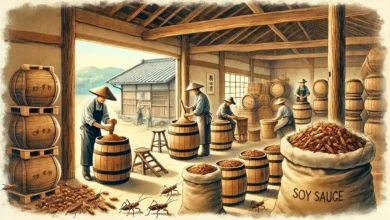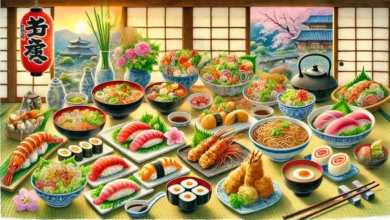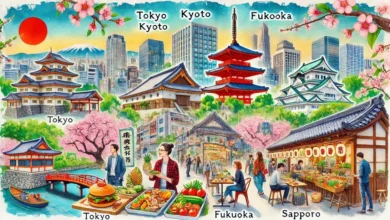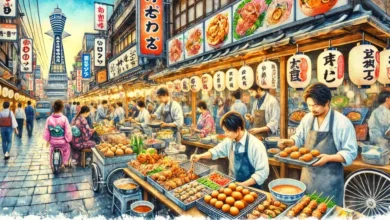Japanese Fruits You Should Try: Insanely Beautiful and Tasty
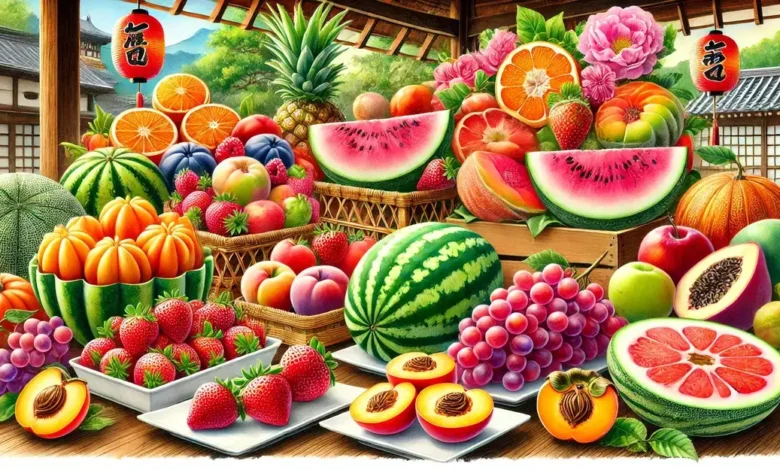
Almost all Japanese fruits are grown in both generic and inexpensive varieties, as well as their more expensive equivalents. While some of these fruits are native to Japan and others were imported, it’s reasonable to assume that they’ve all been developed to be uniquely Japanese in some fashion.
Nashi / Pear (Japanese Fruits)
Nashi pears are a type of fruit that are well-known and loved. They are also called Asian pears. Compared to European pears, they are bigger and rounder. These pears are special because they have a lot of water in them. Because of this, people don’t usually use them to make jams or desserts. Instead, they are often given as gifts or shared with guests on special occasions.
The practice of growing Nashi pears started in Japan during a time called the late Edo Period. But did you know? These pears actually came from China!

Kaki / Persimmon
Persimmons are small, round fruits. People often enjoy them fresh. To do this, they peel and slice them. But that’s not the only way to eat persimmons. They can also be dried, just like apricots and figs.
One thing to note is that persimmons aren’t as sweet as some other fruits. But that doesn’t stop people from loving them! In fact, they are a favorite snack in the fall and winter. That’s because this is when they are in season. Here’s an interesting fact: Persimmons have been grown in Japan since the seventh century. But they didn’t originally come from there. They were actually brought over from China.

Momo / Peach
Peaches in Japan are pretty special. Sometimes, they are grown to be much bigger than the average peach. This isn’t by accident, but because of careful farming. The inside of these peaches, which we call the “meat,” is super juicy. It’s also a light white color, which is different from some other peaches.
You can find these peaches in supermarkets, so everyone has a chance to enjoy them. But that’s not all. Some peaches are farmed to an even higher standard. This means extra care is taken to make sure they are the best they can be.
Here’s a fun fact: Peaches weren’t always in Japan. They were first brought over in ancient times. So, while they are now a big part of Japanese culture, they actually came from somewhere else. This makes the story of Japanese peaches even more interesting!

Yuzu (Citrus Fruit)
Yuzu is a special fruit that has been grown in Japan since the Tang Dynasty. But it’s not just found in Japan. It also grows wild in places like China and Tibet.
Just like lemons and limes, people don’t usually eat yuzu by itself. Instead, it’s used to add flavor or a bit of tartness to other recipes. Some of the things you can make with yuzu include vinegar, ponzu (which is a famous condiment used in many dishes), and tea.
But it’s not just the taste of yuzu that’s special. The skin of the yuzu has a strong scent. This makes it a great ingredient for things like soaps and perfumes.

Ume / Plum
Ume is a fruit that holds a special place in Japanese culture. You might know sakura, or cherry blossom trees, for their beautiful flowers. But did you know? Many of these trees don’t actually produce any fruit. That’s where ume comes in. While its trees might not be as famous for their blossoms, its fruits are much loved.
One common way to prepare ume is by pickling it. This means soaking the fruit in a special mixture to give it a unique taste. The pickled ume is called “umeboshi” in Japanese.
Umeboshi is often found in something called a bento box. A bento box is a single-portion meal that’s packed in a box. It usually has a mix of different foods, and umeboshi is a typical part of it.

Mikan / Tangerine
There’s a type of orange that’s known by different names around the world. In many Western countries, people call them “satsuma.” This name comes from a place in Japan where they were first sent from. But in Japan, these oranges are called “mikan.”
Here’s an interesting fact: These oranges are actually native to China. However, the types that were reintroduced in Japan are now the most common ones you’ll find in orchards all over the world. These oranges are easy to peel, which makes them a popular snack. They’re especially loved during the winter months when they’re in season.

Hatsukoi no Kaori Ichigo / (White) Strawberry
There’s a new type of strawberry in Japan that’s really special. It might even be the most expensive strawberry in the world! Its name means “scent of first love,” which sounds pretty romantic, doesn’t it?
This strawberry looks and tastes like a regular strawberry. But there’s one big difference: the inside of it is completely white! That’s not something you see every day.
You might have heard of another type of white strawberry called a pineberry. Pineberries are a mix of strawberries and pineapples. But even though they’re both white, these new strawberries and pineberries are not the same.

Akebia
Akebia is a plant that grows in several places. You can find it in China, Korea, Taiwan, and Japan. But it’s also found in New Zealand, where it was brought by mistake. In New Zealand, it’s considered an invasive species. This means it grows really fast and can take over other plants.
But Akebia isn’t just a plant. It’s also really useful! People use its leaves to make tea or weave baskets. And its fruits? You can eat them just like vegetables!
Even though Akebia is tough, it’s starting to become popular again. These days, you can find it being sold at markets. But it’s not everywhere yet, so it’s still a bit of a novelty.

Melon (Cantaloupe)
Melons are a big deal in Japan. They’re the most popular fruit there! You can find them in all sorts of things, like coffee, bread, sweets, and even ice cream.
You can buy regular types of melons at the grocery store without spending too much money. But there are also special types of melons that are considered a luxury. One of these is the Yubari melon. These melons are grown in a place called Hokkaido. They’re so special that they can sell for up to 1000 USD each!
Here’s an interesting fact: Melons weren’t always in Japan. They were actually brought over from the Middle East and India.

Shikuwasa (Citrus Fruit)
There are these small fruits that grow in Taiwan and Okinawa. People use them in many ways. They add flavor to local dishes, and they’re also used to make juices, jams, and sauces. You can even see them as a garnish on some foods.
The name of these fruits comes from two words in the Okinawan language. The first word is “shii,” which means sour. The second word is “kwaasaa,” which means food. So, when you put these words together, you get the name of these sour little fruits!


